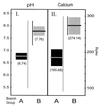Bacillus anthracis diversity in Kruger National Park
- PMID: 11015402
- PMCID: PMC87475
- DOI: 10.1128/JCM.38.10.3780-3784.2000
Bacillus anthracis diversity in Kruger National Park
Abstract
The Kruger National Park (KNP), South Africa, has a recorded history of periodic anthrax epidemics causing widespread disease among wild animals. Bacillus anthracis is the causative agent of anthrax, a disease primarily affecting ungulate herbivores. Worldwide there is little diversity among B. anthracis isolates, but examination of variable-number tandem repeat (VNTR) loci has identified six major clones, with the most dissimilar types split into the A and B branches. Both the A and B types are found in southern Africa, giving this region the greatest genetic diversity of B. anthracis worldwide. Consequently, southern Africa has been hypothesized to be the geographic origin of B. anthracis. In this study, we identify the genotypic types of 98 KNP B. anthracis isolates using multiple-locus VNTR analysis. Two major types are evident, the A branch and the B branch. The spatial and temporal distribution of the different genotypes indicates that anthrax epidemic foci are independent, though correlated through environmental cues. Kruger B isolates were found on significantly higher-calcium and higher-pH soils than were Kruger type A. This relationship between genotype and soil chemistry may be due to adaptive differences among divergent anthrax strains. While this association may be simply fortuitous, adaptation of A types to diverse environmental conditions is consistent with their greater geographic dispersal and genetic dissimilarity.
Figures





References
-
- De Vos V. Anthrax. In: Coetzer J A W, Thomson G R, Tustin R C, editors. Infectious diseases of livestock with special reference to Southern Africa. Vol. 2. Oxford, United Kingdom: Oxford University Press; 1994. pp. 1262–1289.
-
- De Vos V. The ecology of anthrax in the Kruger National Park. Salisbury Med Bull. 1990;68(Spec. Suppl.):19–23.
-
- De Vos V, Bryden H B. Anthrax in the Kruger National Park: temporal and spatial patterns of disease occurrence. Salisbury Med Bull. 1996;87(Spec. Suppl.):26–30.
-
- Farrar W E. Anthrax: from Mesopotamia to molecular biology. Pharos. 1995;58:35–38. - PubMed
Publication types
MeSH terms
Grants and funding
LinkOut - more resources
Full Text Sources

